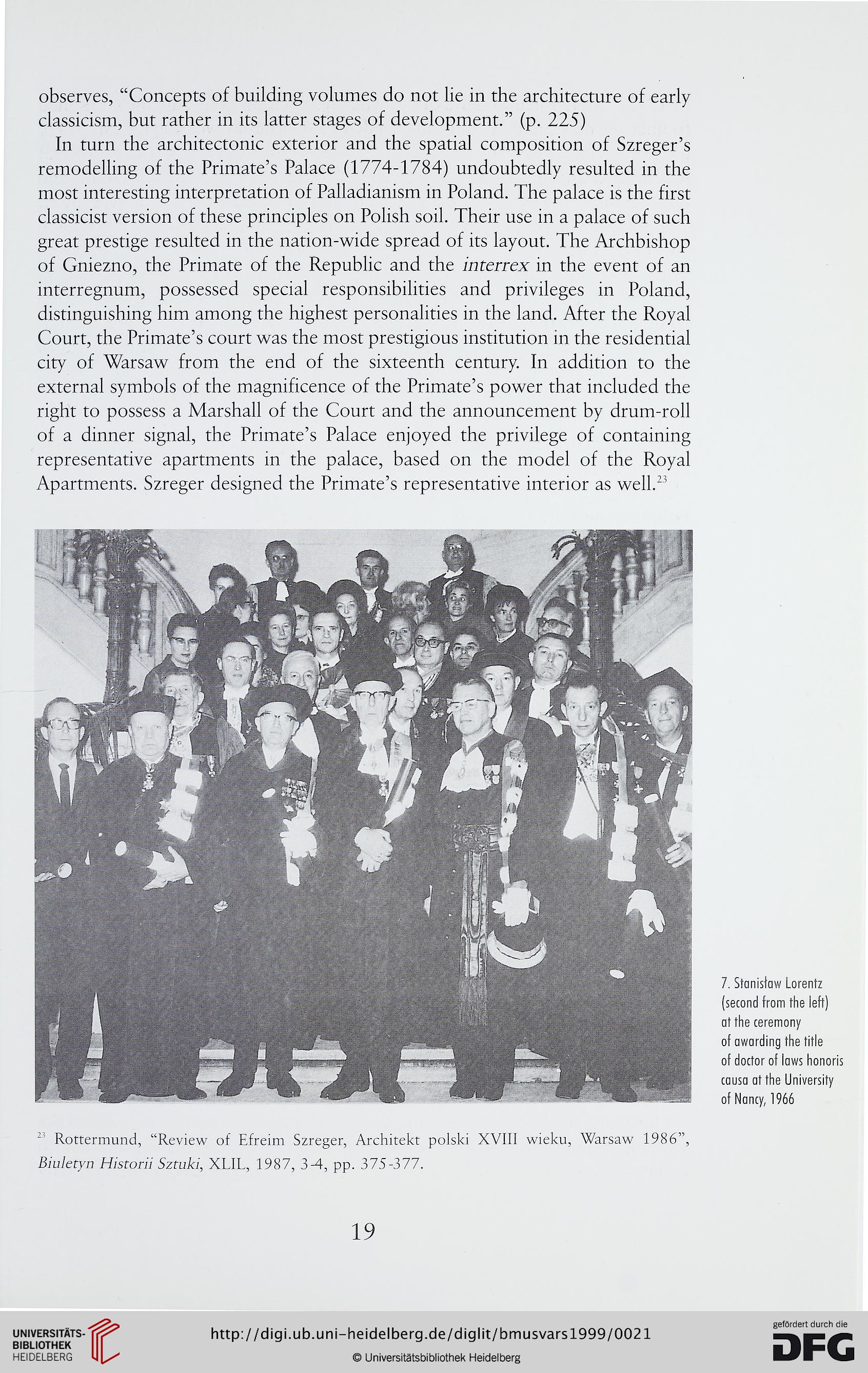observes, “Concepts of building volumes do not lie in the architecture of early
classicism, but rather in its latter stages of development.” (p. 225)
In turn the architectonic exterior and the spatial composition of Szreger’s
remodelling of the Primate’s Pałace (1774-1784) undoubtedly resulted in the
most interestmg interpretation of Palladianism in Poland. The pałace is the first
classicist version of these principles on Polish soil. Their use in a pałace of such
great prestige resulted in the nation-wide spread of its layout. The Archbishop
of Gniezno, the Primate of the Republic and the interrex in the event of an
interregnum, possessed special responsibilities and privileges in Poland,
distinguishing him among the highest personalities in the land. After the Royal
Court, the Primate’s court was the most prestigious institution in the residential
city of Warsaw from the end of the sixteenth century. In addition to the
external symbols of the magnificence of the Primate’s power that included the
right to possess a Marshall of the Court and the announcement by drum-roll
of a dinner signal, the Primate’s Pałace enjoyed the privilege of containing
representative apartments in the pałace, based on the model of the Royal
Apartments. Szreger designed the Primate’s representative interior as well.23
I ' ' i jS
Ma.' -fmA
n
P* „_a sm W
Łz,' j MM
7. Stanisław Lorentz
(second from the left)
at the ceremony
of awarding the title
of doctor of laws honoris
causa atthe University
of Nancy, 1966
’’ Rottermund, “Review of Efreim Szreger, Architekt polski XVIII wieku, Warsaw 1986”,
Biuletyn Historii Sztuki, XLIL, 1987, 3 A, pp. 375-377.
19
classicism, but rather in its latter stages of development.” (p. 225)
In turn the architectonic exterior and the spatial composition of Szreger’s
remodelling of the Primate’s Pałace (1774-1784) undoubtedly resulted in the
most interestmg interpretation of Palladianism in Poland. The pałace is the first
classicist version of these principles on Polish soil. Their use in a pałace of such
great prestige resulted in the nation-wide spread of its layout. The Archbishop
of Gniezno, the Primate of the Republic and the interrex in the event of an
interregnum, possessed special responsibilities and privileges in Poland,
distinguishing him among the highest personalities in the land. After the Royal
Court, the Primate’s court was the most prestigious institution in the residential
city of Warsaw from the end of the sixteenth century. In addition to the
external symbols of the magnificence of the Primate’s power that included the
right to possess a Marshall of the Court and the announcement by drum-roll
of a dinner signal, the Primate’s Pałace enjoyed the privilege of containing
representative apartments in the pałace, based on the model of the Royal
Apartments. Szreger designed the Primate’s representative interior as well.23
I ' ' i jS
Ma.' -fmA
n
P* „_a sm W
Łz,' j MM
7. Stanisław Lorentz
(second from the left)
at the ceremony
of awarding the title
of doctor of laws honoris
causa atthe University
of Nancy, 1966
’’ Rottermund, “Review of Efreim Szreger, Architekt polski XVIII wieku, Warsaw 1986”,
Biuletyn Historii Sztuki, XLIL, 1987, 3 A, pp. 375-377.
19




